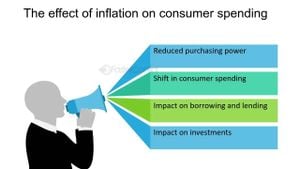Donald Trump's immigration policies have been under the microscope since his presidency, inflaming debates across the political spectrum. With his administration's resolute approach, particularly through initiatives like the appointment of harsh critics of immigration reform to significant roles, challenges remain abundant.
From the very start, Trump's presidency signaled a stark departure from previous approaches to immigration. His early choices for top positions within key departments, including the Department of Homeland Security (DHS), reflected his intention to enforce stricter immigration policies. These picks were often individuals known for their tough stance on immigration, aiming to ramp up deportations and bolster border security.
For example, Trump’s appointment of John F. Kelly as Secretary of Homeland Security and his choice of immigration hardliner Stephen Miller as senior advisor demonstrated his commitment to reducing the influx of migrants and pushing back against perceived leniency of past policies. Kelly, during his tenure, significantly reshaped DHS’s approach, prioritizing deportations and limiting the scope of humanitarian protections, such as Temporary Protected Status (TPS).
Despite this heavy-handed approach, implementing these policies revealed various hurdles. Numerous federal courts challenged the legality of several executive orders aimed at restricting immigration, particularly those targeting travelers from predominantly Muslim countries and broader efforts to limit asylum claims. These legal battles not only delayed the enforcement of such policies but also showcased the balance of power between the executive and judicial branches.
One of the most publicized examples of this push against immigration occurred with the revised travel ban, designated primarily to prevent individuals from specific countries from entering the U.S. The roll-out faced immediate backlash and numerous lawsuits, igniting nationwide demonstrations and sparking fears of discrimination.
But the challenges Trump's immigration strategy faced extended beyond courtroom disputes. The U.S.-Mexico border became ground zero for illustrating these tactics. Reports of family separations at the border surfaced as the administration enforced its ‘zero tolerance’ policy, aimed at deterring illegal crossings. This led to intense scrutiny, with activists and human rights organizations calling for the end of practices deemed cruel and un-American, triggering significant public outrage.
The community impact of these policies evolved as well. The fear surrounding deportation increased within immigrant communities, with countless families worried about separation and uncertainty. Economic ramifications also came to light, as sectors reliant on labor from migrant workers faced shortages, affecting industries from agriculture to construction.
The Trump administration’s measures aimed to address perceived security threats at the border, yet these have had contentious outcomes, such as the construction of the border wall—a significant campaign promise. While physical barriers were erected, environmental concerns and the impacts on wildlife habitats raised questions about long-term consequences. The wall became more than just infrastructure, symbolizing the division of communities and the broader national debate on immigration.
Interestingly, the political fallout from Trump's immigration stance was palpable within the Republican Party. While some factions staunchly supported his vision for stricter immigration measures, others voiced apprehensions, recognizing the potential to alienate moderates and independent voters concerned about human rights. This dichotomy posed strategic challenges heading toward midterm elections and beyond.
During this period, Congress grappled with reworking immigration laws. Attempts to pass comprehensive reform repeatedly faltered, caught between progressive calls for pathways to citizenship for undocumented immigrants and conservative demands for stronger border security. The partisan divide widened, complicing any bipartisan efforts to address the multifaceted nature of immigration reform effectively.
Fast forward to the present, Trump's policies are now part of larger discussions on immigration, particularly as the Biden administration seeks to navigate the fallout. Strikingly, many of the issues infused by the prior administration's policies linger, creating sticky problems around asylum laws and immigration backlogs. These systemic challenges highlight the continuous debate around immigration, authority, and compassion.
Despite the contentious legacy of Trump’s immigration policies, the effects seen today reflect the battles still waged over borders, human rights, and who can call America home. Looking forward, comprehensive immigration policies are more needed than ever, with advocates urging for humane approaches to aid those seeking refuge and legality.



